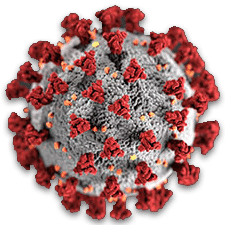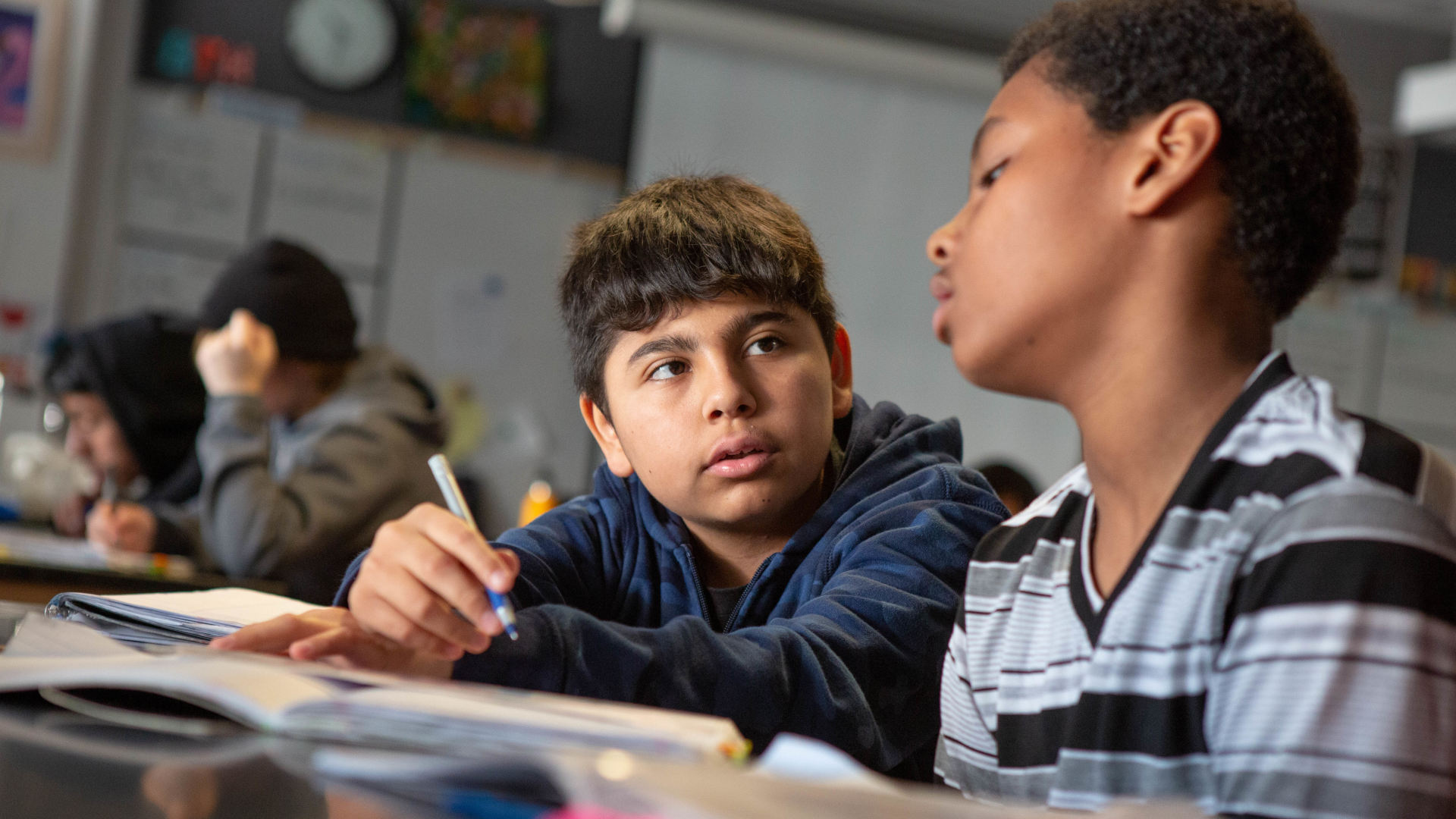Shaky Science Instruction Pervades Middle School Classrooms
Middle school science teacher Kent Heckenlively has spent part of his time teaching, well, not science.
A prominent anti-vaccine campaigner, Heckenlively made world news in 2017 when he was denied entry to Australia for a lecture tour to encourage parents to stop vaccinating their children, according to the Australian Broadcasting Corporation. That didn’t blunt the California science teacher’s ambitions: Since Covid-19 hit, he’s been on a writing tear.
In April 2020, he released a bestselling book with co-author Judy Mikovits, a discredited scientist who claims that vaccines “kill millions.” Last October, the pair released another book. That one questions mask use and alleges, among much else, that masks weaken the immune system by restricting oxygen intake — an idea not supported by the Centers for Disease Control or World Health Organization.
Heckenlively works at Gale Ranch Middle School in San Ramon, California. He’s held a teaching credential in the state since 2006, based on passing the state’s biological sciences and geosciences teaching exams, state records show.
But his academic science background is unclear: He declined a request from The Hechinger Report to answer questions about his science training and how he discusses pandemic-related public health measures in class. His Amazon author page lists him as an attorney who majored in political science and English in college.
Throughout the pandemic, the American public has struggled to be scientifically literate enough to separate well-grounded scientific findings from social media-driven fiction. Middle school science teachers matter: Early adolescence is a time of huge cognitive change and a critical time to build students’ understanding of and enthusiasm for science, according to the National Science Teaching Association.
But the shortage of qualified science educators may be hurting efforts to help more Americans learn how science works. To make up the gap, states are putting teachers without a strong science background in front of classrooms.
Data show many of the 69,000 U.S. middle school science teachers have no scientific background. Almost a quarter have neither a science degree nor full certification to teach science, according to a 2017-18 survey by the U.S. Department of Education. At schools where at least three-quarters of students are eligible for free or reduced-priced lunch, 32 percent of middle school science teachers have neither a science degree nor certification to teach science.
The problem isn’t necessarily state teacher certification requirements. Kentucky, for example, requires middle-school teachers seeking certification to have a science teaching degree and pass proficiency tests.
But the state’s teacher shortage means there’s no guarantee that there are teachers with a science background in classrooms. In a 2019 survey of the state’s school principals, 81 percent reported they could find few or no satisfactory applicants for middle school science jobs.
Those without qualifications end up in front of classrooms in several ways, including an alternative certification process that lets someone start teaching under a provisional credential while they take courses to get fully certified.
States can also issue emergency certificates to those without credentials — when districts can’t find qualified candidates in Kentucky, a person just needs a bachelor’s degree in any field. In 2019, about a quarter of Kentucky’s teachers held provisional or emergency certificates.
Kentucky isn’t alone. In the latest U.S. Department of Education nationwide report on teacher shortages, 20 states reported a shortage of middle school science teachers during the 2017-18 school year. Of those, 14 were in the South and West.
 |
For all of Undark’s coverage of the global Covid-19 pandemic, please visit our extensive coronavirus archive. |
Against a backdrop of teacher shortages prompting widespread emergency measures, few middle school science teachers report feeling confident about all the material they are responsible for teaching.
Only 7 percent reported feeling “very well prepared” to teach lessons about modern physics, 19 percent about electricity and magnetism, and 21 percent about the properties and behaviors of waves, a 2018 National Science Foundation-supported survey found. More than half the teachers said they felt “very well prepared” to teach only three topics — the structures and functions of organisms; ecology/ecosystems; and states, classes, and properties of matter.
A solid science background makes science teachers more effective, said Jonathan Osborne, professor emeritus at the Stanford Graduate School of Education. His research indicates that students learn better through in-class dialogues. Managing those conversations is hard for teachers who don’t have a grounding in science, because they fear losing control or being exposed for not knowing how to answer a question, he said.
But graduates with a science background don’t see a financial payoff when they choose teaching.
Teachers with degrees in science, technology, engineering, and math pay a steeper wage penalty for choosing teaching over alternative careers than do graduates with any other degrees, a 2019 analysis by the Brookings Institution concluded. By the end of their careers, teachers with STEM degrees were making about 40 percent less than their non-teacher peers with comparable degrees.
“If you pay teachers what we pay them, and you put the entire burden of society on their shoulders, then yes, you’re going to have a teacher shortage,” said Bertha Vazquez, a science teacher at George Washington Carver Middle School in Miami, Florida.
Some states have experienced epic teacher shortages for years. In Oklahoma, to fill vacancies, emergency teaching certifications have skyrocketed since 2009. One of the top subjects for those emergency credentials is middle school science: The state issued 83 emergency credentials in the topic in 2020.
Qualified teachers can help students learn to sort out the valid from the fraudulent — a critical skill when science issues get politicized. Teachers with a science background help students become “competent outsiders to science,” including the ability to assess the credibility of sources that make scientific claims, said Osborne. “When students look at a web page on vaccines or masks, the first question is ‘what is the scientific consensus on this?’ The second is ‘what claim to expertise does this person have?’”
The geography of the middle school science teacher shortage coincides with attitudes toward Covid prevention. Schools in the South and West have an especially hard time getting qualified teachers: 28 percent and 23 percent of middle school science teachers in those regions have neither a science degree nor full certification to teach science, compared with 18 percent in the Northeast, the Department of Education survey showed. Meanwhile, of the 10 states with the lowest percentages of their populations fully vaccinated and boosted, nine were in the South or West.
Even so, having science degrees hasn’t kept some middle school science teachers from spreading misinformation.
At a school board meeting last September in Beacon, New York, teacher Laurie Malin called the Covid vaccine “an experimental gene therapy that will alter your DNA, that has more deaths and adverse effects associated with it,” according to a local news report. (That’s not an accurate characterization of Covid-19 vaccines, which don’t change or interact with DNA in any way, notes the CDC.) Her LinkedIn profile says she is a science teacher at Beacon City Schools and lists an undergraduate degree in biology, ecology, and oceanography.
Nearly a decade ago, leading science organizations like the National Research Council and the American Association for the Advancement of Science set out to improve science education in the U.S. by issuing the Next Generation Science Standards, or NGSS.
Developed by 26 states in 2013, the standards require that students understand core ideas in scientific disciplines and the connections across those disciplines. Students must study how scientists and engineers work, and they have to put what they learn into practice by designing and conducting projects and explaining the data they collect.
Limited evidence exists about whether the standards have improved science education in schools. But teaching experts worry about how successful the standards will be if they’re delivered by teachers with no science background. Osborne pointed to nursing education, which he said improved because the professional community came together to define a list of what every nurse has to know to be qualified.
“We haven’t done that with teacher education,” he said. “We need a coming together of stakeholders to say, ‘Look, these are the competencies and capabilities that we expect of somebody who’s a beginning teacher.’”
Agreement could be tough since there’s not even enough data on what beginning teachers need to know.
“The preservice [student-teaching] landscape is such a kind of Wild West,” said Heidi Schweingruber, who leads the Board on Science Education at the National Academy of Sciences. “The reality is middle school science and middle school science teachers’ preparation have been an issue for a long time, even before the NGSS.”
Not even the standards would have prepared teachers to address the biggest science issue this decade: They don’t mention infectious diseases or human immune systems.
That’s by design, said Schweingruber. The standards are meant to provide a conceptual framework that will help students learn any number of specific scientific facts. School districts can write their own standards-based curriculums that discuss specific subjects like epidemiology, immunology, or the evolution of the coronavirus, Schweingruber said.
Charlotte Moser, assistant director at the Children’s Hospital of Philadelphia Vaccine Education Center, thinks the standards should be updated to specifically require some knowledge of infectious diseases and human immunity. Assuming students will learn those concepts in college leaves out too many people, she argued.
“A lot of adults don’t have any formal science education opportunities beyond high school,” Moser said. “And because many adults don’t have a good understanding of how their immune system works, they have fears about vaccines.”
Whatever the content of the standards, some teachers are bringing pandemic-related lessons into their science classes.
In fall 2020, Corydon Strawser, who teaches engineering and is the sixth-grade gifted teacher at Lake Nona Middle School in Orlando, Florida, wrote a two-week curriculum on Covid for his school that covers the history of pandemics and the physics of masking.
He brings in (via Zoom) virologists and immunologists from the nearby University of Central Florida to discuss the data from their research on different types of masks. And students use atomizers — “we used to call them squirt bottles,” Strawser said — to simulate how far droplets travel in a sneeze.
Having students practice science themselves may take some of the politics out of these newly charged topics, Strawser said. So far, he’s not gotten any pushback from students. “I tell the kids, ‘This is a medically accurate and mature discussion, and we just have to leave it at that. I’m not here to preach.’”
Steven Yoder reports for the Hechinger Report.
This story was originally published by The Hechinger Report, a nonprofit, independent news organization focused on inequality and innovation in education.











